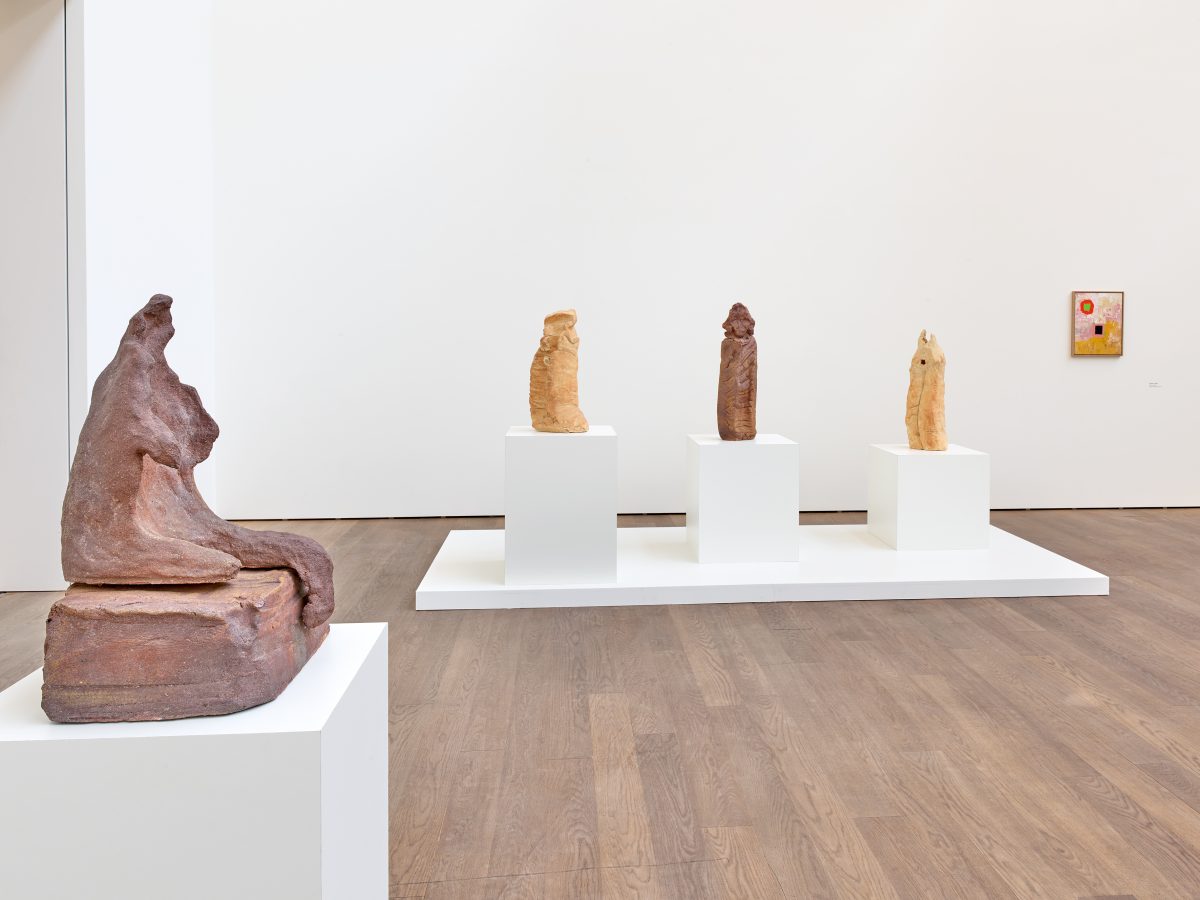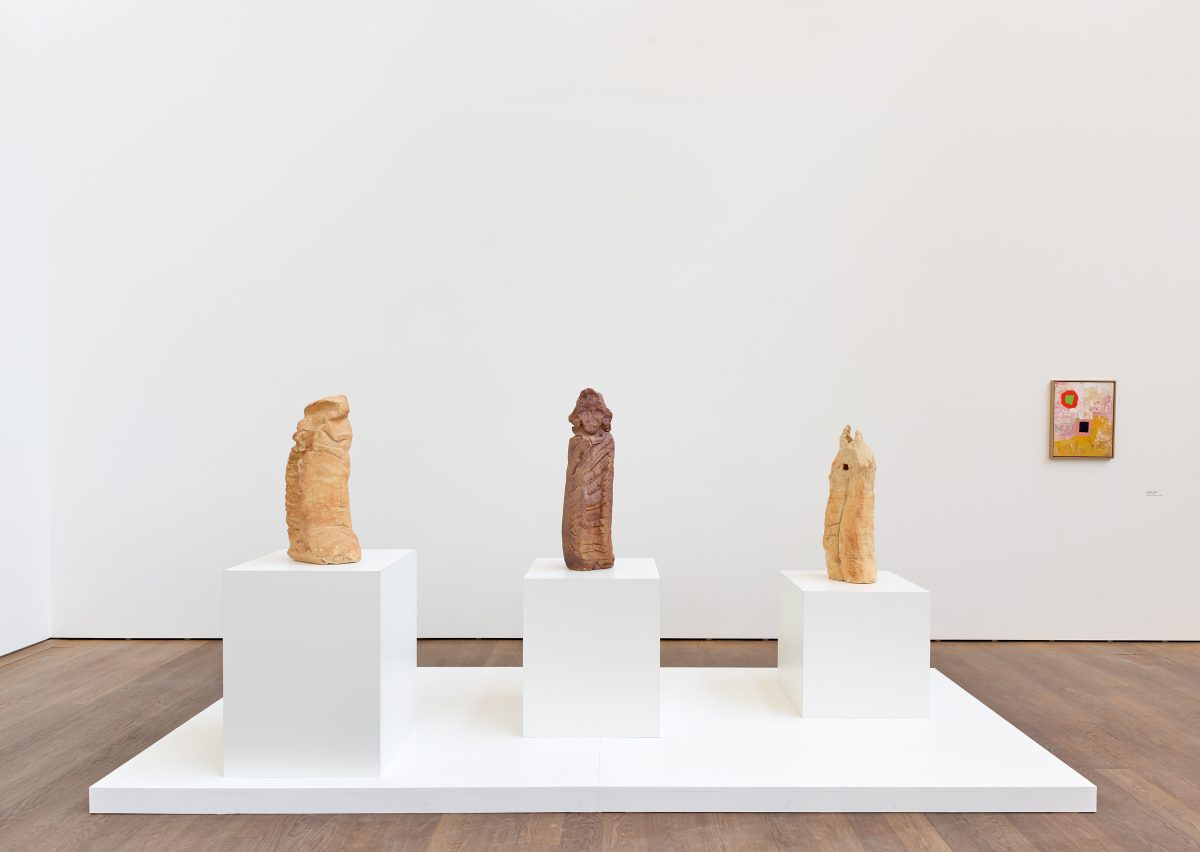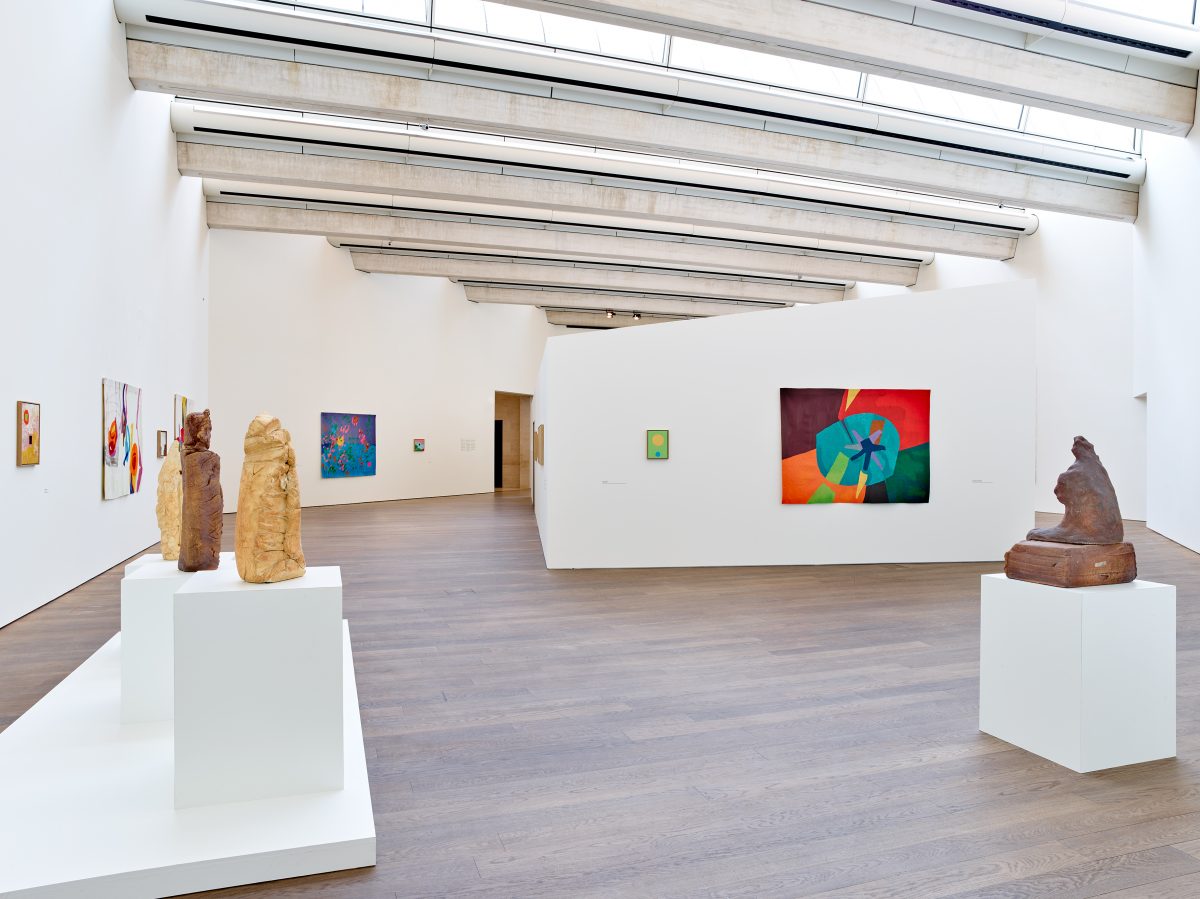
- This event has passed.
etel adnan et les modernes
Developed in partnership with the Zentrum Paul Klee in Bern, who presented a first version of the exhibition in 2018, Etel Adnan et les modernes provides an overview of Adnan’s visual work from the early 1960s to the present day. At its heart lies the artist’s relationship with the work and ideas of some of the key protagonists within modern art, first and foremost Paul Klee (b. 1879, Münchenbuchsee; d. 1940, Locarno) who she once described as ‘the first painter I fell in love with’. Writing on his work in 2012, Adnan described an obsession with his work: ‘By obsessed, I mean that his paintings put me in a state of ecstasy. They possessed me. In Kairouan [in Tunisia], he wrote, “Colour and I are one.” And I understood that he was speaking of revelation.’ is explored in the first gallery, through a series of works that have been selected in collaboration with Adnan. The selection includes a number of important works by Klee in addition to paintings by Wassily Kandinsky (b. 1866, Moscow; d. 1944, Neuilly-sur-Seine), Nicolas de Staël (b. 1913, Saint Petersburg; d. 1955, Antibes) and Georges Mathieu (b. 1921, Boulognesur-Mer; d. 2012, Boulogne-Billancourt). Two tapestries designed at the art centre created by the architect Ramses Wissa Wassef (b. 1911, Cairo; d. 1974, Egypt), in Harrania in Egypt, are also presented. These conversations highlight some of the key themes in Adnan’s work, such as writing, gesture and weaving – this last offering a metaphor for life itself. The film Ismyrne (2016) by the artists Joana Hadjithomas (b. 1969, Beirut) and Khalil Joreige (b. 1969, Beirut) gives contextual insight to Adnan’s life and work via an intimate portrait.
The second gallery features several groups of recent, abstract works by Adnan. The artist describes these paintings as ‘inner landscapes’, drawing on her recollections of places she has visited. Adnan’s sensitivity to landscape is also visible in works depicting Mount Tamalpais in California and views of New York that are brought together in her film Motion (2012). These works are placed in dialogue with others by the painter and poet Eugénie Paultre (b. 1979, Paris) and sculptor Simone Fattal (b. 1942, Damascus) with whom she maintains a close connection.



